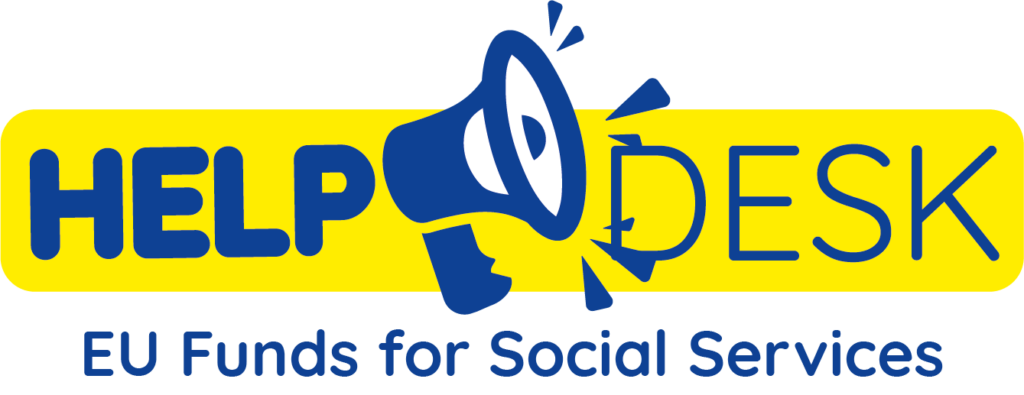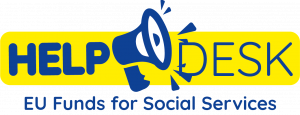EU territory and structural policy
The aim of the regional and structural policy is to address the differences in development and welfare between regions and to ensure the sustainable growth and competitiveness of the European Union and its member countries. The goal of the program period 2021–2027 is to renew the economic structures of the regions, improve employment and skills, and increase inclusion. The funding comes from three complementary funds: the European Social Fund Plus (ESR+), the European Regional Development Fund (ERDF) and the Just Transition Fund (JTF).
Application notices and support for making applications
A renewing and competent Finland 2021−2027
The aim of the regional and structural policy is to address the differences in development and welfare between regions and to ensure the sustainable growth and competitiveness of the European Union and its member countries. The goal of the program period 2021–2027 is to renew the economic structures of the regions, improve employment and skills, and increase inclusion. The funding comes from three complementary funds: the European Social Fund Plus (ESR+), the European Regional Development Fund (ERDF) and the Just Transition Fund (JTF).
Each member country prepares a program for the program period, which describes the starting points, goals and actions set for the development activities of the member country, as well as funding in accordance with the prevailing regulations. Finland’s program,A renewing and skilled Finland 2021−2027, supports business, energy, climate, innovation, education and employment policies as well as work against exclusion and poverty. The cross-cutting priorities of the program are sustainable development, gender equality, equality, digital development, internationalization, climate change and innovation. The program concerns mainland Finland. The provincial government of Åland is responsible for its own program work.
Table 1: Action lines with funding channels and amounts and relative shares of EU and national funding
| Line | Funding-channel | Union’s financial contribution | National financial contribution | In total |
|---|---|---|---|---|
| Innovative Finland | ERDF | 537 791 200 € (58 %) | 388 491 300 € (42 %) | 926 282 500 € |
| Carbon neutral Finland | ERDF | 261 085 444 € (58 %) | 187 021 257 € (42 %) | 448 106 701€ |
| A more accessible Finland | ERDF | 67 929 222 € (60 %) | 45 286 148 € (40 %) | 113 215 370 € |
| Employing, skilled and inclusive Finland | ESR+ | 542 061 375€ (58 %) | 398 831 885 € (42 %) | 940 893 260 € |
| Finland of social innovations | ESR+ | 30 120 795 € (95 %) | 1 585 306 € (5 %) | 31 706 101 € |
| Finland combating material deprivation | ESR+ | 30 233 745 € (90 %) | 3 359 306 € (10 %) | 33 593 051 € |
As the table shows, the program’s funding consists of both EU funding and national funding. Finland’s funding from the ESR+ fund is approximately EUR 602 million.
Including national public funding for ESF+ projects, a total of about one billion euros is available. Finland’s EU funding from the European Regional Development Fund, on the other hand, is approximately EUR 837 million. National funding including ERDF total funding for the program period is estimated to be around 1.5 billion euros.
European Regional Development Fund: Finland’s goals
The aim of the European Regional Development Fund (ERDF) is to level the development differences between countries and regions, create vitality, improve employment, support sustainable growth and increase competitiveness. The fund supports development projects that support the realization of the goals in question. In addition, the fund supports sustainable urban development.
- Action line 1: Innovative Finland, the specific goals of which are 1) improving research and innovation capabilities and the introduction of advanced technologies, 2) utilizing the benefits of digitalization for the benefit of citizens, companies and public administration, and 3) improving the growth and competitiveness of SMEs.
- Action line 2: Carbon-neutral Finland, the specific goals of which are 1) promoting energy efficiency measures and reducing greenhouse gas emissions, 2) promoting adaptation to climate change, risk prevention and disaster preparedness and recovery, and 3) promoting the transition to a circular economy.
- Action line 3: A more accessible Finland, the special goal of which is the development of regional and local accessibility. (See the specific objectives of the policies in more detail here).
Diagram 1: The relative share of funding received by the action line from the ERDF fund

European Social Fund plus (ESR+): Finland’s goals
- Paths to work: The goal is to support employment in the open labor market, utilize different forms of work, promote the diversity of work communities as well as professional and regional mobility, mitigate professional differentiation and ensure comprehensive consideration of customers’ service needs.
- New skills for working life: Continuous learning is supported and flexible educational paths are made possible for everyone, paying special attention to underrepresented groups in education. At the same time, productivity and well-being at work are promoted.
- For equal participation: We support the attachment of people in the weakest labor market position to society, education and the labor market. Inclusion and well-being are promoted with the help of wide-ranging and timely forms of networking. Expertise related to gender equality and equality is also developed in various services.
- Safety nets for the future of young people: The timeliness and effectiveness of the services offered to young people will be improved by developing the content of open, foster and aftercare for child protection. The activities support the living situation and coping of children and young people who are clients of child welfare services, and especially those placed outside the home.
- Snacks for life: People in the most difficult position are supported with food and basic goods. At the same time, with the guidance, counseling and support services offered to them, their access to other services and the path to employment is promoted. (See in more detail here).
Diagram 2: The relative share of funding received by the action line from the ESF+ fund

National themes
Part of the funding from the European Regional Development Fund (ERDF) and the European Social Fund Plus (ESF+) of the Renewable and Competent Finland 2021–2027 program is allocated to strategically important national themes. A maximum of 20 percent of the ESF+ funding is reserved for these themes. ELY centers handling structural fund tasks act as mediating institutions for national themes.
Material aid and sustainable urban development from the ESR+ fund
Program administration
The regional associations grant support from the European Regional Development Fund (ERDF) and the Just Transition Fund (JTF) to development projects that promote the development, sustainable growth and vitality of the regions and the investments included in them. In addition, regional associations grant support for sustainable urban development projects.
ELY centers, on the other hand, grant support from the European Regional Development Fund (ERDF) and the Just Transition Fund (JTF) for climate change mitigation and adaptation, as well as development and investment projects related to the environment and natural resources, as well as development and investment projects related to transport and infrastructure. From the ERDF fund, ELY centers grant support for innovative, growth- or internationalization-related development measures of companies, as well as material and immaterial investments (so-called company subsidies), development of the operating environment of companies, such as surveys necessary for business operations, development of services needed by companies, promotion of cooperation and business-life-networked research.
From the ESR+ fund and the Just Transition Fund (JTF), ELY centers grant support to development projects related to supporting employment, skills and social inclusion. In addition, the Food Agency grants support from the ESR+ fund for material aid projects for needy persons (so-called food aid).
Monitoring Committee
The innovative and competent Finland 2021–2027 program monitoring committee monitors the program’s implementation, effectiveness and performance. It e.g. approves the selection criteria used in the program, the final performance report and evaluation plan, as well as any significant changes. The monitoring committee carries out its duties in cooperation with the Ministry of Labor and Economic Affairs, which acts as an administrative authority.
Partnership agreement
For certain EU programs and funds, a partnership agreement is drawn up, which confirms the strategic direction of program planning. The Ministry of Labor and Economy is responsible for coordinating the preparation of the partnership agreement. ESF+-funded partnership agreement programs in Finland are:
A renewing and skilled Finland 2021−2027 (Mainland-Finland/EAKR, ESR+ and JTF) and
Åland’s structural fund program 2021−2027 (Åland/ERDF and ESF+)
TABLE OF CONTENTS
- EU territory and structural policy
- Application notices and support for making applications
- A renewing and competent Finland 2021−2027
- European Social Fund plus (ESR+): Finland’s goals
- National themes
- Material aid and sustainable urban development from the ESR+ fund
- Program administration
- Monitoring Committee
- Partnership agreement
Co-funded by the European Union. Views and opinions expressed are however those of the author(s) only and do not necessarily reflect those of the European Union. Neither the European Union nor the granting authority can be held responsible for them.




